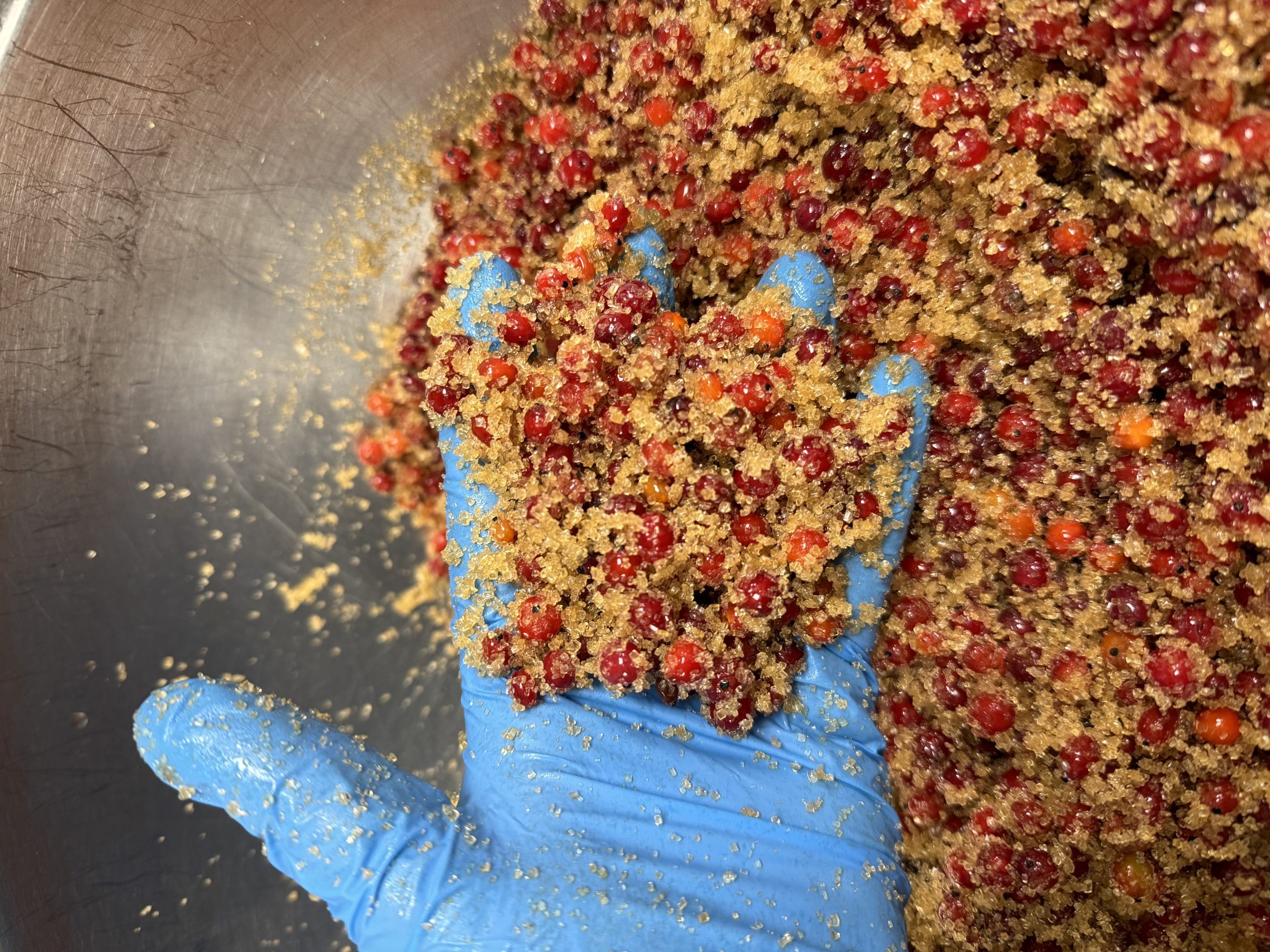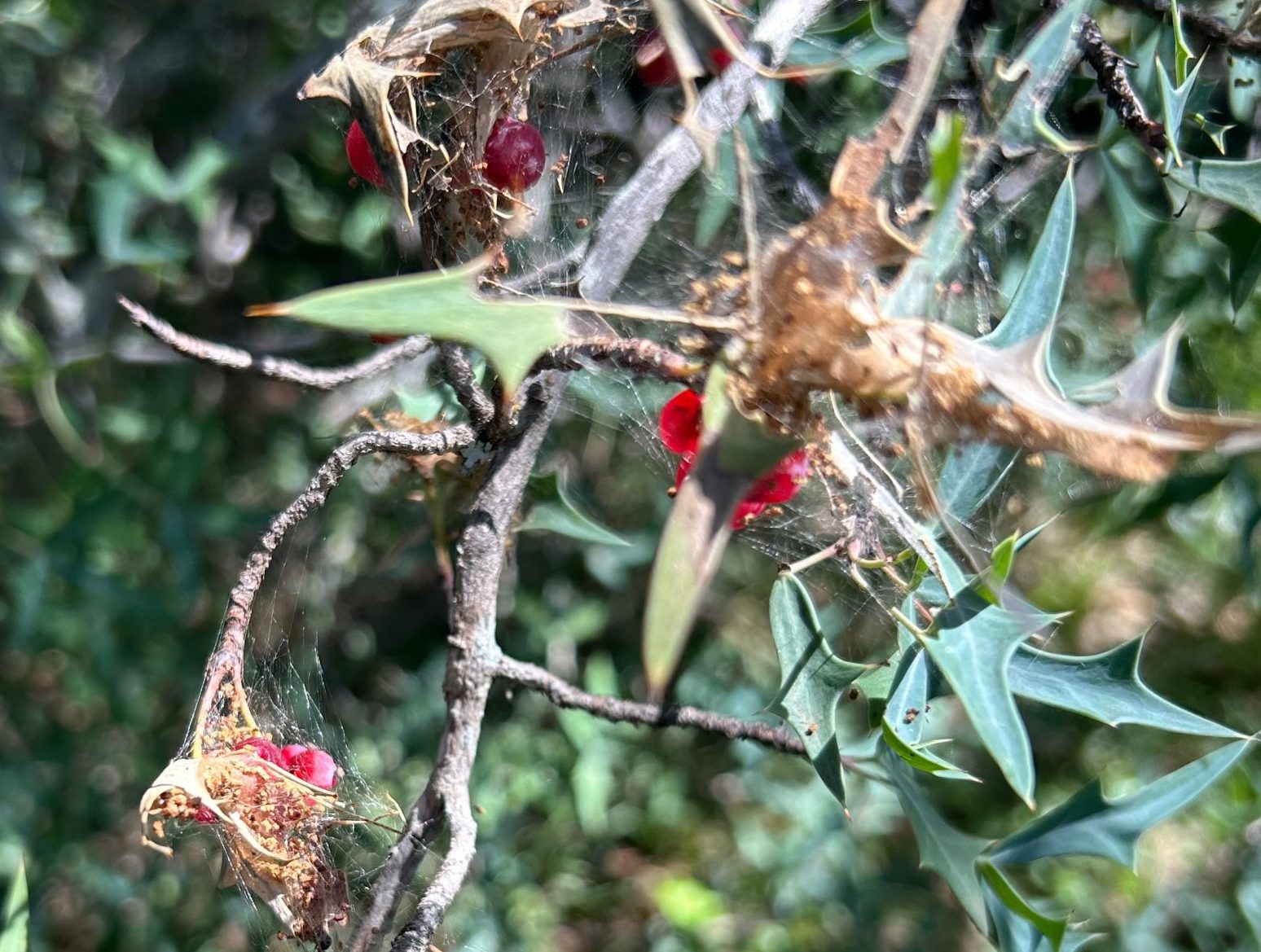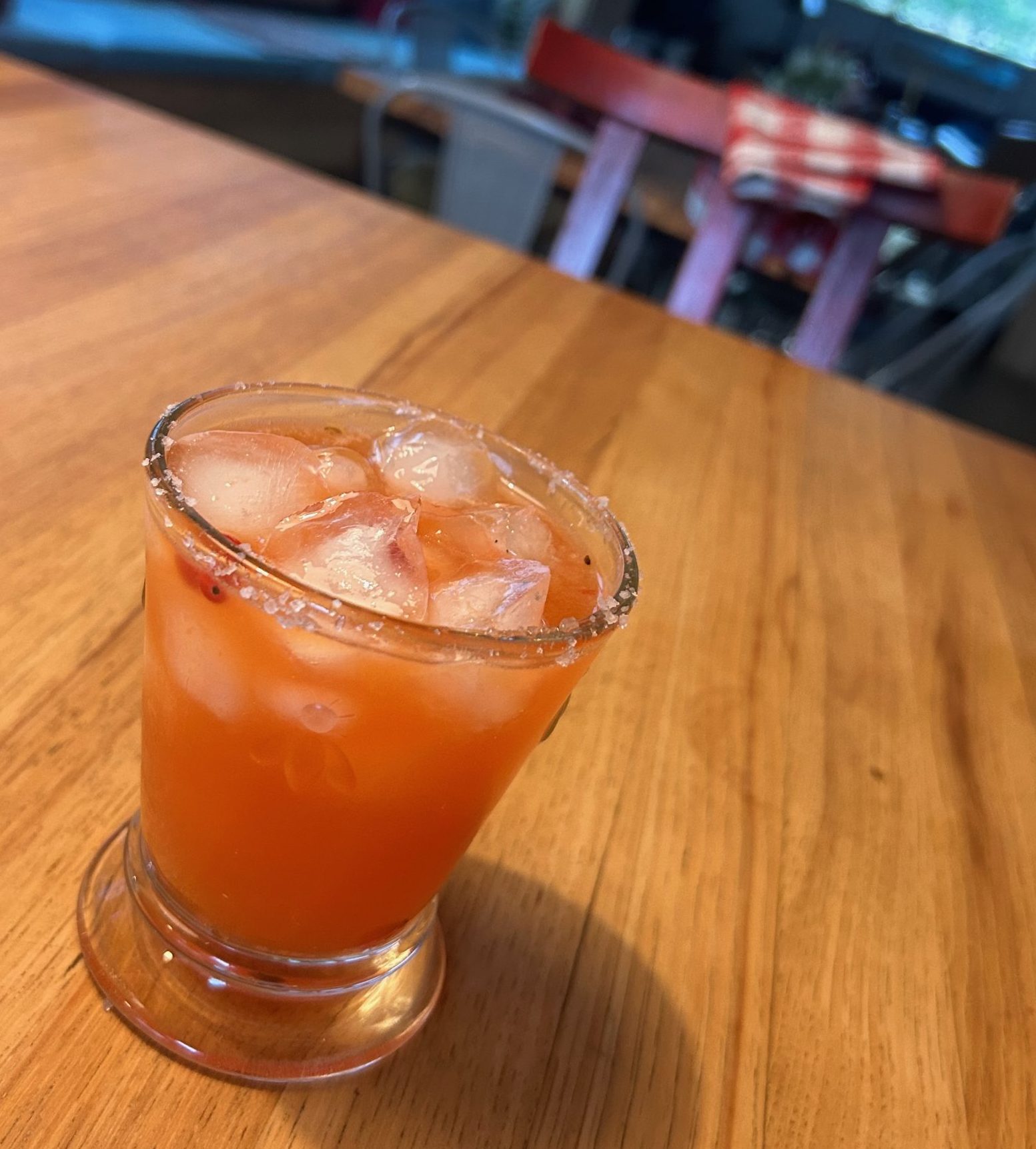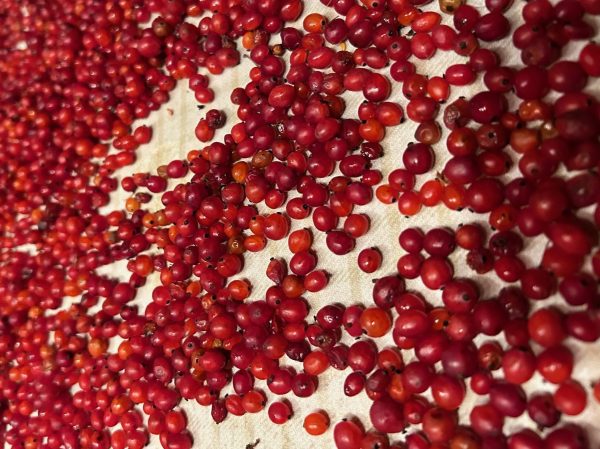Fans of agarita have been enjoying a bumper crop of the bright, tart berries this spring, but climbing temperatures are likely to cut the season short.
Some foragers don’t mind.
“The hot weather will shrivel any remaining berries, but even then they’re worth tasting with a nibble as they enter a raisin-like stage,” said Mark “Merriwether” Vorderbruggen, founder of the Foraging Texas website.
Vorderbruggen bemoaned the fact that he witnessed the berries, whose flowers are among the first to bloom in late winter, just starting to ripen during a visit to Wimberly in April.
Since, he hasn’t been anywhere where agarita grows. “So I haven’t been able to partake in the bountiful harvest,” he said.
Not so with Elizabeth Johnson, chef/owner of Pharm Table, a San Antonio restaurant that offers a locally sourced, globally inspired menu.
Referred to as a “Food as Medicine Guru” by the James Beard Foundation, Johnson made it out to the Texas Hill Country on a recent weekend and returned with more than two gallons of the Texas barberry.

Agarita berries covered in unrefined sugar as part of the lacto fermentation process at Pharm Table. “They’ll be ready at the end of August.” –Photo courtesy Pharm Table
She and her staff have been tasked with removing insects, twigs and leaves from the wild berry harvest in preparation for its preservation and fermentation.
“Heritage food alert,” touted Pharm Table’s Instagram feed this week, depicting the berries in various processing stages. “Agarita berries are booming right now. . . stay tuned for new menu items!”
Johnson prefers preserving the berries via lacto-fermentation, one of the oldest food processing techniques that uses good bacteria, fungi, or yeasts to give food an extended shelf life. Fermentation makes the berries last and brings out the nuances of the their taste.
“You’re making them go from one-dimensional to multi-dimensional,” she said. “If you freeze and unfreeze them, you have a short shelf life, as mold will grow.”

Chef and Pharm Table owner shows off a Barberry Webworm while harvesting agarita berries in the Texas Hill Country. Note hefty elbow-length gloves. –Photo by Monika Maeckle
Luckily for those who live in the Austin/San Antonio area, the fruit of Mahonia tirfoliolata, the most common species of barberry found in Texas, is ubiquitous in the Texas Hill Country right now. The bright red berries look like small currents.
Andrea DeLong-Amaya, Director of Horticulture at the Ladybird Johnson Wildflower Center in Austin, described this year as the second “gangbuster” agarita crop in a row.
“Last year was a long time ago, but I think this year might compare as even more productive,” she said, citing the combination of drought followed by a fair amount of well-timed rains.
Texas Agrilife Extension Agent for Bexar County David Rodriguez also attributed the bumper crop to favorable weather this year. “They were just happy with the weather and the spread out rain,” he said.
Agarita’s utility is legendary. Foragers tap the berries for tarts, pancakes, and cobblers or make jelly, syrup, juice, and compotes out of them. Rodriguez mentioned an agarita wine and agarita jam spiked with jalapeño.
The three-pronged spikes of agarita’s leaves create ornery branches that make gathering the berries literally a pain. Johnson wisely sported hefty welder’s gloves while reaching into the stickery shrubs.
The classic harvesting method includes laying lay a sheet or umbrella underneath an agarita bush and gently beating the branches with a stick or broom. You can also comb the spindly reams, from the inside of the bush out, since the prickly leaves face outward. Protective, elbow-length gloves, long sleeves, and jeans are advised.
Inevitably, twigs, agarita leaves, dirt, organic matter, and numerous insects will accompany the berry harvest. After gathering the berries, pick out the detritus.
This season, the same favorable weather that produced a bumper agarita crop also wrought an excessive amount of a particular worm like creature that favors agarita bushes.
According to Austin naturalist and amateur entomologist Val Bugh, who volunteers at the Lady Bird Johnson Wildflower Center, these larvae are commonly called the Barberry Webworm, but actually they are caterpillars and the larval stage of a moth. (Worms don’t turn into butterflies or moths.)

Barberry Webworms make tubelike nests of their own frass–or poop–on agarita limbs. –Photo by Monika Maeckle
A member of the Pyralid moth family, the creature is interchangeably referred to as Omphalocera dentosa and Omphalocera cariosa. Their caterpillars make frass-covered tubes (that is, nests made of caterpillar poop) along agarita’s woody stems and devour its flowers, fruits and leaves.
According to Bugh, who conducts Fauna Tours at the Wildflower Center, the Barberry Webworm has occasional population explosions that can be quite localized.
“We’ve had them at the Wildflower Center in the past….but like the Salt Marsh Caterpillar, Snout Butterflies and Truncated True Katydid, there can be lots of individuals in a particular area one year and then they seem to practically disappear for years after,” she said via email.

Agarita berries are protected by prickly, ornery, three-pronged leaves that jab and stick foragers and wildlife. Thick gloves recommended! –Photo by Monika Maeckle
Bugh said she had heard stories of the pesky caterpillars eating all the berries from certain bushes.
Agarita foragers have developed various ways of cleaning the caterpillars and detritus from the harvest.
Piling a cup or so of berries on a small mesh screen while tilting and shaking slightly can serve to separate the fruit from the chaff.

Aga-Rita! Cheers! Margarita made with agarita juice instead of lime juice. –Photo by Monika Maeckle
You can also put the uncleaned berries on a screen or colander and hold it over a leaf blower or in front of a fan, which effectively clears the detritus.
Johnson washes them in a perforated pan, then uses tweezers to pick out the unwanted material.
Wildlife also consumes the berries, which are loaded with pectin, carbohydrates, Vitamin C, and antioxidants.
Agarita is generally not available in nurseries. If you want this plant for your landscape, you’ll likely have to seek it out at native plant sales, specialty nurseries, grow it from seed or transplant from the wild.
According to several sources, growing agarita from seed takes three years to produce a five-gallon plant. Fruit will follow, after how long is unpredictable and depends largely on light, temperature and water. Well-drained soil is a must. Seeds are available online, but be sure to get Mahonia trifoliata.
Related posts:
- Gangbuster agarita crop fuels birds, bees, critters and people in Texas Hill Country
- Damn you, Malta star thistle! Ornery invasive takes up residence in Texas Hill Country
- Bastard Cabbage, a rambunctious and tasty invasive, is ousting our native Texas wildflowers
- Scientist and naturalist David Hillis provides holistic and enlightening tour of the Texas Hill Country
- Monarch butterflies heading our way as wildflower bounty awaits
- No monarchs yet, but Red Admirals fluttering through Texas
- Clammyweed named 2024 Pollinator Plant of the Year
- Mostly native urban pollinator garden outperforms lawn every time
- Flower “bed” works overtime as bachelor pad for solitary bees
Like what you’re reading? Don’t miss a single article from the Texas Butterfly Ranch. Sign up for email delivery at the bottom of this page, like us on Facebook, follow us on Twitter, @monikam or on Instagram.



Thank you for a very pleasant and interesting read this morning! A rare find today!
You’re welcome! Thanks for reading and writing! —MM
Great article! Thanks for including me in the agarita harvest.
Great Read!! Thank you for sharing! I need to get myself a plant. ❤